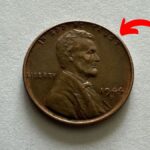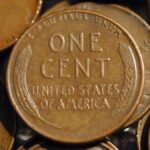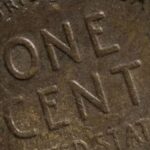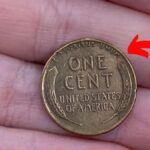The Lincoln Wheat Penny Valued at $120,000, Still in Circulation: The humble penny, often overlooked in today’s digital economy, holds remarkable secrets within its copper facade. Among these small pieces of American history, the Wheat penny series stands as a testament to numismatic fascination. Minted from 1909 to 1958, these coins have become more than just currency – they represent snapshots of American history, technological advances, and occasional human error that resulted in some of the most valuable coins ever produced.
The Bronze Beauty of Wartime
Perhaps no Wheat penny captures the imagination quite like the 1943-D Bronze specimen. During World War II, copper became a critical war material, leading the U.S. Mint to shift penny production to zinc-coated steel. However, in a fascinating twist of fate, a few bronze planchets from 1942 somehow found their way into the 1943 production line at the Denver Mint. The result? A single confirmed 1943-D Bronze Wheat penny that would later command an astounding $840,000 at auction in 2010. This coin represents not just a minting error, but a unique intersection of American wartime history and numismatic rarity.
Steel in a Copper World
The story continues into 1944 when the Mint returned to copper production. In an ironic reverse of the previous year’s error, a few steel planchets from 1943 slipped into the 1944 production run at the San Francisco Mint. The resulting 1944-S Steel Wheat penny, with only two known examples, demonstrates how even government institutions can occasionally mix their metals. One of these rare specimens achieved a remarkable $373,750 at auction, proving that sometimes mistakes can be worth their weight in gold – or in this case, steel.
The Double Vision Phenomenon
The 1955 Doubled Die Obverse Wheat penny stands as perhaps the most visually striking error in American coinage. Unlike subtle mint mistakes, this error created a dramatic double image visible to the naked eye, particularly in the date and the word “LIBERTY.” What makes this error particularly fascinating is that approximately 24,000 of these coins entered circulation before the mistake was noticed. Today, well-preserved examples can fetch upwards of $114,000, making this error both relatively obtainable and incredibly valuable.
The Designer’s Legacy
The 1909-S VDB penny tells a unique story of artistic pride and public reaction. Victor David Brenner’s initials (VDB) on the coin’s reverse sparked unexpected controversy, leading to their swift removal. Of the 484,000 pieces minted with these initials in San Francisco, well-preserved examples now command prices exceeding $168,000. This coin represents more than just rarity – it embodies the intersection of art, public opinion, and monetary policy in early 20th-century America.
The Missing Mark Mystery
The 1922 No D Strong Reverse Wheat penny emerged from a unique set of circumstances at the Denver Mint. While all 1922 pennies should have carried the “D” mint mark, worn dies resulted in some coins lacking this crucial identifier. The most desirable of these are the “Strong Reverse” variants, which maintain sharp detail on the reverse despite the missing mint mark. These coins, selling for upwards of $82,250, demonstrate how mint mark errors can create extraordinary value in otherwise common coins.
An Early Error Makes History
The 1917 Doubled Die Obverse Wheat penny showcases one of the earlier examples of significant die doubling in American coinage. With approximately 200 known specimens, this coin features notable doubling on both the date and the motto “IN GOD WE TRUST.” High-grade examples have achieved prices around $120,000, highlighting the premium that collectors place on well-preserved error coins from this era.
Understanding Value and Rarity
The extraordinary values achieved by these rare Wheat pennies stem from a perfect storm of factors. Their rarity comes not just from low mintage numbers but from the unique circumstances of their creation. Whether through wartime material shortages, die errors, or limited production runs, each coin tells a distinct story of American minting history. The condition of these coins plays a crucial role in their value, with well-preserved specimens commanding the highest prices.
The Modern Hunt
Today’s collectors approach Wheat penny hunting with sophisticated tools and knowledge, but the thrill of discovery remains unchanged. While finding one of these ultra-rare specimens in circulation is unlikely, understanding their characteristics helps collectors identify potentially valuable coins. Professional grading services provide authentication and condition assessment, crucial factors in determining a coin’s true value.
Preservation and Legacy
These rare Wheat pennies serve as more than just valuable collectibles – they are tangible connections to America’s past. Each coin reflects the economic conditions, technological capabilities, and historical events of its time. Their preservation ensures that future generations can study and appreciate these unique pieces of American numismatic history.
Conclusion
The story of rare Wheat pennies demonstrates how seemingly minor variations can create items of extraordinary value. Whether through error, circumstance, or intentional limited production, these coins have transcended their original purpose to become treasured artifacts of American history. For collectors and historians alike, they remain fascinating examples of how small pieces of metal can tell large stories about our nation’s past.






